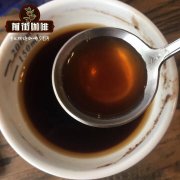The KIKULUNGO Coffee Cooperatives in Angola introduced the current situation of coffee in Angola.

Professional coffee knowledge exchange More coffee bean information Please pay attention to coffee workshop (Weixin Official Accounts cafe_style)
Coffee History in Angola
Before independence in 1975, coffee production in Angola reached about 230,000 tons per year, making Angola the fourth largest coffee producer in the world. With the outbreak of the Civil War, that reputation came to an abrupt end in 1975.
The conflict lasted 27 years and destroyed most of the country and thousands of lives. Although 12 years have passed since the peace agreement, development has not yet reached the desired stage. The country's infrastructure was slowly being rebuilt and life was gradually returning to normal. However, many are still recovering from the scars left by the war.
Even in the toughest times, many coffee farmers haven't lost hope. They continue to produce coffee, even if they don't know where to sell it. Today, most brave farmers are part of our cooperatives.
In fact, Angola was once the world's fourth-largest coffee exporter because its Robusta-so silky but rich-was unique. According to the National Coffee Institute, demand for Angola Robusta was so great that after the war began, it had to be exported and grown abroad because the national coffee industry was paralyzed.
KIKULUNGO COFFEE COOPERATIVE
The Triases family has a tradition of growing coffee that dates back to when Angola was still a Portugal colony. Triases 'predecessors endured enormous sacrifices to make Angola one of the world's largest coffee exporters.
Kikulungo Coffee Cooperative was founded in 2010 to support small family coffee growers and provide them with industry representation.
Status of Angola Coffee
Quality and quantity: Most of the existing plants are decades old, thus reducing yields per hectare. The only remedy is to plant more hectares or new plants, both of which require capital and take years to recoup investment due to the production cycle. In addition, many cooperatives lack adequate hulling and cleaning machinery, which may affect the quality of manufacturers. In addition, coffee is much more labour-intensive than other crops, and co-operatives that are short of staff end up with lower product quality.
Transition: There are not enough facilities to convert green coffee beans into finished products, and due to lack of access to machinery, many farmers simply sell the ingredients wholesale to walk-on suppliers who then transform the goods in cities.
Transportation: Most farmers are in rural areas and Robusta production is concentrated in Gabela, Amboim and Kwanza Sul. Transportation to machining centers can be complex and expensive, meaning it is often the buyer's expense.
Export: Export requirements are not always clearly communicated and paperwork and processing can lead to long delays and high costs. Given that international market prices (based on the London Mercantile Exchange) are almost double Angola prices, these delays are worth the cost, but most cooperatives cannot afford these prices upfront.
Qianjie Coffee: Guangzhou's baking shop, small store but a variety of beans, can find a variety of famous beans, but also provide online store services. https://shop104210103.taobao.com
Important Notice :
前街咖啡 FrontStreet Coffee has moved to new addredd:
FrontStreet Coffee Address: 315,Donghua East Road,GuangZhou
Tel:020 38364473
- Prev

What is the annual output of Angolan coffee? Small farmers growing coffee in Angola
Professional coffee knowledge exchange more coffee bean information follow coffee workshop (Wechat official account cafe_style) Joao Neto said the government plans to start investing 130 million US dollars in the coffee industry in 2010 and provide 150 million US dollars in low-interest loans to farmers who invest in the coffee industry. Our goal is to increase coffee production to pre-civil war levels, Joao Neto said.
- Next

What are the growing areas of Angolan coffee? An introduction to the history of coffee cultivation in Angola
Professional coffee knowledge exchange more information about coffee beans Please follow the coffee workshop (Wechat official account cafe_style) Angolan coffee is famous for its sweet taste. The most amazing thing about the Angolan coffee bean is that it is a strong bean. Robusta beans are usually known for their strong flavor and are often used as fillers for Arabica coffee beans by major coffee producers.
Related
- What documents do you need to go through to open a coffee shop? coffee shop coffee shop certificate processing process
- How to purchase Coffee beans in small Cafe how to choose a suitable supplier for domestic Coffee supply Company
- How to drink Starbucks Fragrance White Coffee? how to make Australian White Coffee? what Italian coffee beans are recommended?
- The Story of Flora Coffee: the name of Flora Coffee Bean and the implication of the Flowers on Florna Coffee
- How much does a cup of coffee cost? How much is the profit of a cup of coffee? What is the profit of the coffee shop in a year?
- Yunnan small Coffee, known as "fragrant Coffee", introduces the characteristics of Alpine Arabica Coffee producing areas in Yunnan, China
- 2023 latest Starbucks full menu price list how much is a cup of Starbucks coffee what is better to drink the most popular hot and cold drinks recommended
- Starbucks different kinds of Coffee Price list Starbucks menu 2023 Top Ten Best drinks in Starbucks
- Starbucks Spring praise Comprehensive matching Coffee Bean theme Story Packaging implication and taste description
- The cost of a cup of coffee latte American coffee cost price and selling price

